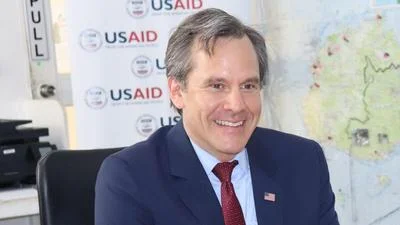RICHLAND, Wash. - Employees are making significant progress reducing risk despite one of the worst winters in Hanford Site history.
They dealt with below-freezing temperatures, more than 20 inches of snow and bouts of freezing rain between December 2016 and February 2017, leading to three days of site closures, seven delayed starts and four early releases, impacting the cleanup schedule.
They dealt with below-freezing temperatures, more than 20 inches of snow and bouts of freezing rain between December 2016 and February 2017. This led to three days of site closures, seven delayed starts and four early releases, impacting the cleanup schedule.
“This winter will long be remembered for how challenging it was, and continues to be," said Ty Blackford, CH2M Hill Plateau Remediation Company (CH2M) president and chief executive officer. “Because of the resilience and flexibility of our employees, we still made progress reducing risk on the Hanford Site."
At the Plutonium Finishing Plant, demolition on the Plutonium Reclamation and Americium Recovery facilities could not safely occur in the cold weather. EM redeployed demolition crews to remove asbestos and contaminated ventilation ducting - necessary to reduce hazards in the main facility before demolition. Dust suppression equipment that used water was at risk of freezing, and the hoods demolition employees wear to protect against contamination fogged up in the cold weather, putting them at greater risk of falling on icy surfaces. The project lost about 25 days due to weather and may add a second shift to maintain its schedule.
In groundwater remediation efforts, the temperatures sometimes meant an around-the-clock response to keep the groundwater treatment facilities’ equipment unfrozen. Some transfer lines used to treat contaminated water froze, but workers alleviated the issue by thawing some of them. Some pipes remain frozen, but crews are working on alternatives.
Dense snow postponed some sampling and drilling operations. Information from those operations is used for documentation to help determine future cleanup; as a result the documentation is delayed. Workers are on additional shifts and prioritizing work to safely make up for lost time.
The winter stopped equipment destined for Hanford in its tracks. However, the 324 Building Disposition Project made progress in a mockup facility, where crews fabricated a test saw to cut a concrete pad designed to replicate the floor of the building’s B Cell. Contaminated soil is underneath the cell.
When snow sidetracked crews at the Environmental Restoration Disposal Facility (ERDF), the site’s regulated landfill, employees removed snow to continue waste disposal operations.
The weather also prevented 618-10 Burial Ground crews from performing intrusive work, like remediating vertical pipe units filled with highly contaminated waste, or processing waste drums in grout. When those tasks could not be done, crews removed snow, supported accelerated shipments of waste drums off-site, and performed housekeeping and maintenance.
“The snow and ice created a lot of challenges, most importantly keeping our project safe and ensuring the roads around ERDF remained clear," said David Duranceau, ERDF disposal operations manager. “Our hard work in the harsh weather required determination from our workers to ensure all access points and walkways remained safe. I’m proud to be part of such a dedicated team."
Snowy, icy roadways curtailed shipments of waste across the site. More than 40 waste shipments were cancelled due to road conditions. The weather impacted shipments of waste between PFP, the Central Waste Complex and Permafix Northwest, where waste is treated before being returned to the Central Waste Complex.
Winter contingency plans and recovery efforts are underway to combat the winter. Employees work overtime to catch up, realigning schedules and looking for efficiencies to ensure advancement of safe, cost-effective risk reduction.
Source: U.S. Dept. of Energy, Office of Environmental Management








